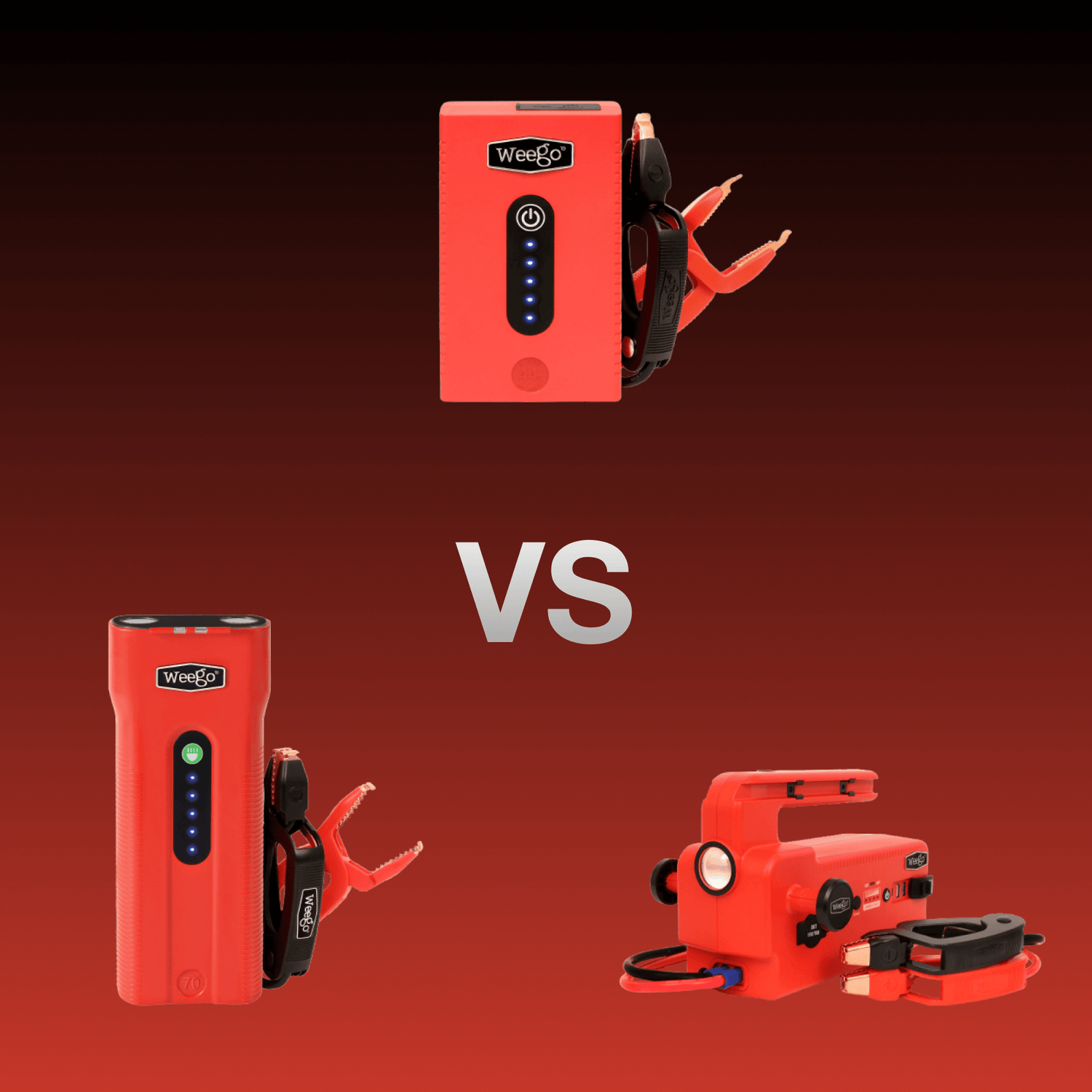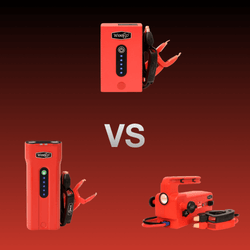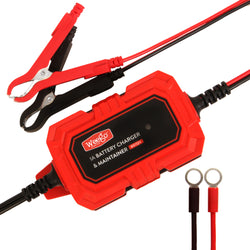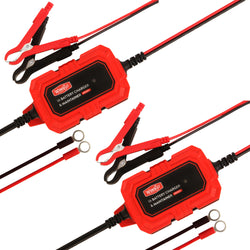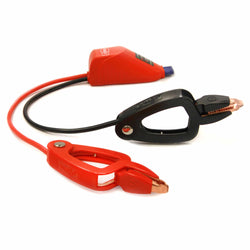When shopping for a jump starter, you'll come across various terms and ratings, such as Cranking Amps (CA), Cold Cranking Amps (CCA), Starting Amps, and Peak Amps. You may be wondering, what are Cold Cranking Amps, and how many Cranking Amps do I need? These specifications can be confusing, especially when comparing jump starters with different battery types. To understand these numbers, it's important to recognize the differences between lead-acid and lithium-ion batteries.
Lead Acid:
Lead-acid batteries have been the standard for vehicles for decades. They are designed to live under the hood of your car for years, enduring frequent use and heavy cranking, particularly in the winter when temperatures drop. Understanding how lead-acid batteries function is key to knowing why certain ratings like Cold Cranking Amps (CCA) are so important.
- Cranking Amps (CA) for lead-acid batteries measure how much current the battery can sustain at 32°F for 30 seconds. This is important because a vehicle needs a certain amount of power to start, and this measurement reflects the performance of a battery at more moderate temperatures.
- Cold Cranking Amps (CCA) measure how much current the battery can sustain at a much colder temperature – typically 0°F for 30 seconds. In cold weather, car batteries have a harder time delivering the necessary power, so a high CCA rating ensures your car can start even when the temperatures are frigid.
Lead-acid batteries are designed to handle these tough conditions over time. Even though a car engine may need only around 120A to start, a 500CCA battery might be used. This higher rating ensures that, even after a few years of use, the battery will still be able to provide enough power to start the car.
Lithium-Ion:
Unlike lead-acid batteries, lithium-ion jump starters are designed for occasional use, not for continuous use over many years. They don't live under the hood of your car, exposed to extreme temperatures or constant draining and recharging. Instead, lithium-ion jump starters are compact and portable, providing a quick burst of power to jump-start your car when needed.
Since lithium-ion batteries don’t work the same way as lead-acid, their ratings are different:
- Cranking Amps (CA) for lithium-ion measures the amount of current the battery can sustain at 72°F for just 3 seconds. This short burst of power is all that’s needed to get your vehicle started.
- Starting Amps measure the amount of current a lithium-ion jump starter can provide for 30 seconds at 72°F. This helps give an idea of how long the jump starter can maintain a useful charge to start the car.
Peak Amps: Marketing Numbers That Don’t Reflect Real Power
Peak Amps are another metric often advertised, but they can be misleading. This measurement typically reflects the maximum burst of power a jump starter can deliver, usually measured over just a few milliseconds, and there are no specific regulations for testing it. Unfortunately, this number is often exaggerated for marketing purposes.
- Why it’s Misleading: While peak amperage might look impressive in ads, it doesn’t represent the sustained power needed to start a vehicle. It's more of a quick, momentary surge that’s not practical for real-world jumping.
- What to Focus On: Instead of peak amps, focus on cranking amps (CA) or starting amps for lithium-ion jump starters. These ratings are more indicative of the jump starter’s ability to power your car reliably, particularly in real-world conditions like a dead or cold battery.
Understanding the Key Differences
Lead-Acid Batteries:
- Designed for long-term, consistent use.
- Cranking Amps (CA) at 32°F for 30 seconds.
- Cold Cranking Amps (CCA) at 0°F for 30 seconds.
Lithium-Ion Jump Starters:
- Designed for occasional use.
- Cranking Amps (CA) at 72°F for 3 seconds.
- Starting Amps at 72°F for 30 seconds.
- Peak Amps (used for marketing purposes, not a reliable measure of performance).
Jump starters can be overwhelming with all their different specifications, but understanding the key differences between lead-acid and lithium-ion batteries is crucial. Lithium-ion jump starters are built for high-power bursts, like quickly jump-starting your car, while lead-acid batteries are designed for long-term, continuous use. When evaluating a jump starter, focus on cranking amps and starting amps (for lithium-ion), as these reflect the real power your device can deliver. Avoid getting caught up in peak amps—often just a marketing tool with little practical value.
With any product you’re spending a pretty penny on, it’s important to trust the company. At Weego, we stand behind our products because we’re passionate about them, and we think that shows in the quality. Need a second opinion? Check out our feature by the Wirecutter!
